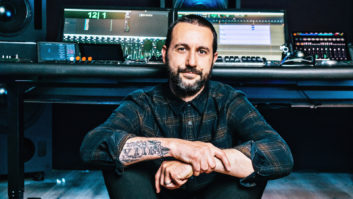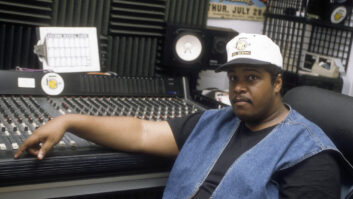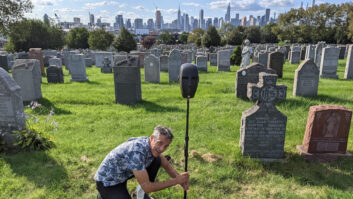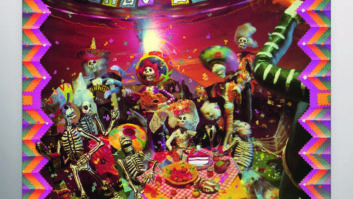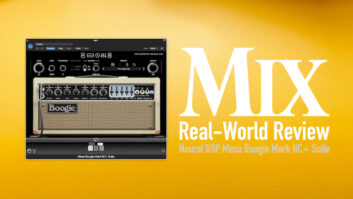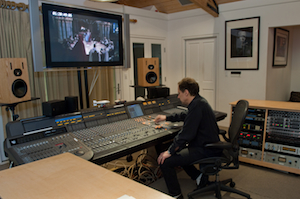
Mark Isham in his studio.
Mark Isham’s five-acre estate is spread over rolling countryside in the horse-centric West Valley community of Hidden Hills. The renowned film composer’s daily commute involves nothing more than a short walk across the lawn that separates his home from his well-appointed studio, housing two large composing spaces and a pair of writing stations.
Along with his film work—he has two movie scores out this summer—Isham has a regular gig scoring the ABC series Once Upon a Time, the rare live-action show that uses an orchestra. Each week during production, he composes new music to picture, which is then recorded with a full orchestra at The Bridge in Glendale. Aside from those weekly trips down the Ventura Freeway, he rarely has to leave his complex.
“I’ve elected to work in a more intimate environment, as opposed to Hans Zimmer, for example, who bought a building,” Isham explains. He elected to work at home in order to be close to his wife and four kids, but convenience was a factor as well. “If I have an idea after dinner, I can run next door and realize it,” he says. He bought the property with the intention of converting the horse stables into a studio, but soon discovered it would be far more expensive to convert than to build his facility from scratch. “We put the studio where the turnout area used to be,” he says. “And then my boys decided horses weren’t for them, so the riding rink came down, and the stables became a storage facility for both home and studio.”
Isham followed a winding road, figuratively speaking, to this high-tech oasis amid sylvan splendor. A classically trained trumpeter enthralled by jazz, he took a simultaneous interest in electronic music, Brian Eno’s Ambient 1: Music for Airports serving as his bible. “My two worlds were hard-core jazz and ambient music, and my focus and first-life’s dream was to bring those two poles together,” Isham explains. He sent out cassettes of some of his early hybrid experiments, which led to his first film-scoring gig, for Never Cry Wolf, in 1983.

Isham’s studio.
“I worked my ass off seven days a week for four-and-a-half months, realizing I don’t know how to do this,” he recalls. “But I’m a smart guy, so I can get some help from the smart people around me and figure it out. And I delivered the score for a fairly major motion picture. That kick-started my career.”
Isham has gone on to compose dozens of film scores, including Crash, A River Runs Through It, Quiz Show, In the Valley of Elah, Fly Away Home, The Mechanic, Warrior and Dolphin Tale, while also making records for Windham Hill, Virgin and Columbia. Since 1996, this homebody has been doing it all right here.

Panorama of Isham’s studio.
He does the bulk of his writing in Studio A, working in Logic and then Pro Tools, in front of a pair of Mac Pros and a Sony TV hooked up to an M-Audio Oxygen 88 piano/controller, with Dan Wallin custom speakers and a Vienna Ensemble Pro 5 serving as the mixing host. The setup contains every conceivable plug-in and virtual-instrument software package. And if the need arises, he’s just a swivel of his Aeron chair away from the Euphonix CS3000 console that dominates the back half of the space.
Isham then leads a guest across the lawn to the main house. “With about 25 percent of my writing, I still use paper and pencil,” he says, walking past a grand piano in the living room. “Right there—old-school. For certain types of projects it’s just easier to do. It’s just quicker, and the sound of a 1928 Steinway is always great.”
Two years ago, Isham added a screening room to his house, and it now serves double duty as a 5.1 mixing environment. “For mixing,” he says, “everything is done in the box, with a big, powerful computer [Mac Pro 2010 2.4 GHz] controlled by a series of Euphonix fader modules; we pull out as many as we need, depending on the size of the project. There’s a connection under the couch. And if we want to watch a movie, we just unplug, move the gear out, and the 8-year-old can run around and not break anything. It’s a great room—all Tannoy monitors with two big 18-inch subs.”
On the landing that leads into the screening room, the double entry doors are flanked by stacks of gear. “The front end’s powered by the old Cello Class-A amplifiers, and all the video goes through a big pro scaling unit, so it looks and sounds really good,” Isham says. “The computer, clocking and interfaces are all here.”
For the final mix of an episode of Once Upon a Time music, files of the orchestral cues are dropped onto a hard drive at The Bridge and returned to Isham’s home studio. When the mix is completed, it goes into a dropbox for pickup by the show. An individual piece might start at the Steinway, move into Studio A for mocking up, go to The Bridge for the orchestration and finally to the screening room for the mix. “That’s the simple route,” Isham clarifies. “It can make a trip to Studio B or to the music editor; on the paperwork side of it, it makes a trip to the orchestrator and meets us at The Bridge.”
And that, in a nutshell, is Mark Isham’s world—not counting several trips to Shreveport in the fall to watch his son Nick, who’s the starting quarterback for the Louisiana Tech football team. “I have no idea where that gene came from,” he admits with a fatherly smile.
